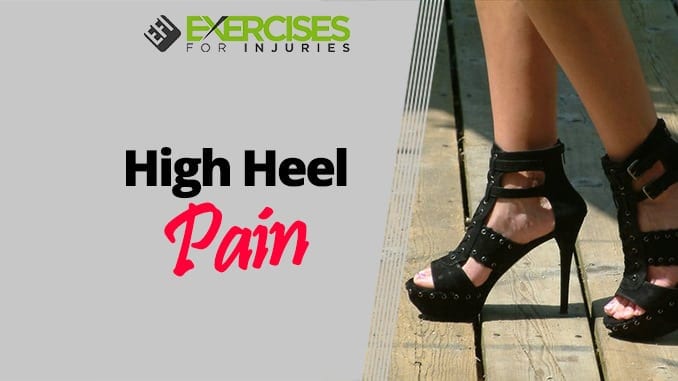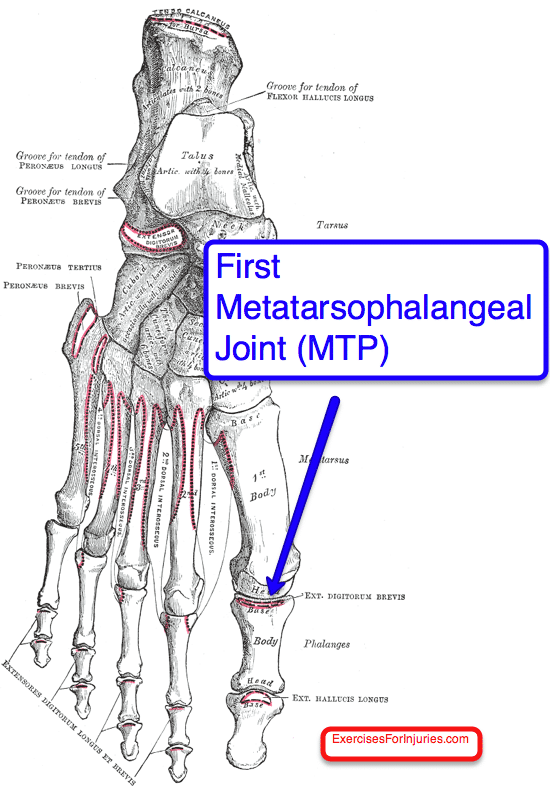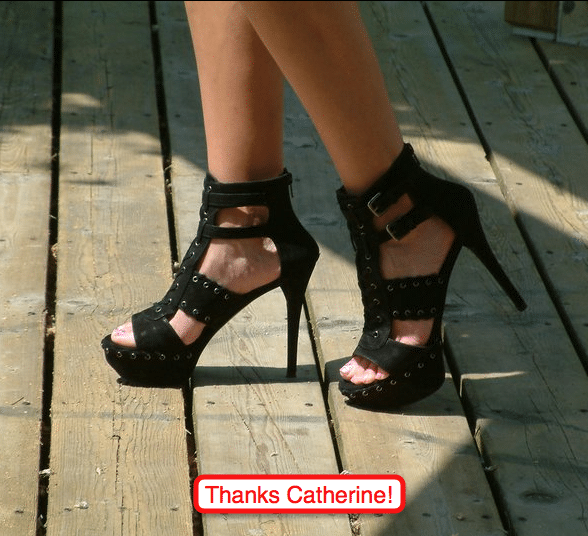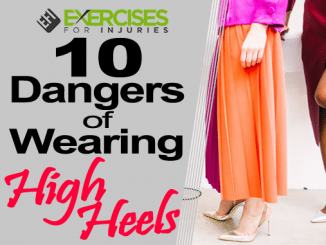
Stop laughing. Yes, I am going to talk about high heel pain today.
I was a little bored, so I got thinking about high-heeled shoes.
I know it is summer, and I should be thinking about sandals and flip-flops, but we will get to that later.
Back to high-heeled shoes.
I had a fitness professional ask me what I thought about high-heeled shoes.
Are they a good thing or a bad thing when it comes to the body and injuries?
Hmmm, interesting question.
Once again, I have my opinion, thoughts, and knowledge, but it is always nice to dig into the research and see what we can find.
It was amazing what I found in the research regarding high heels.
#1 – High Heeled Shoes Create Twice the Force onto the Big Toe
This article looked at the joint reaction force of the first metatarsophalangeal (MTP – The first joint from the foot to the big toe) during the toe-off phase of gait while walking in bare feet and high-heeled shoes.
They found that high-heeled shoe walking forces in the big toe were twice as high as in barefoot walking.
Barefoot versus High-Heeled Walking:
- 0.8 versus 1.58 joint reaction force in the MTP joint
- 0.44 versus 1.03 times bodyweight in the metatarsal-sesamoid joint
Conclusion – If you have foot pain or toe injury, wearing high heels will make it worse or slow recovery.
Reference – McBride ID, Wyss UP, Cooke TD, Murphy L, Phillips J, Olney SJ. (1991). First metatarsophalangeal joint reaction forces during high-heel gait. Foot Ankle. 1991 Apr;11(5):282-8.
#2 – Good Chance that High Heeled Shoes will Lead to Knee Pain
Osteoarthritis of the knee is twice as common in women as in men.
The researchers wanted to see if high-heeled shoe-wearing could be the cause.
They got women to walk in high-heeled shoes and bare feet and looked at the forces in the knee.
What they found was:
- a 23% increase in force across the patellofemoral joint
- a 23% increase in the medial compartment of the knee
Conclusion – High-heeled shoes increase the knee’s stress, which can lead to patellofemoral pain or osteoarthritis.
Reference – Kerrigan DC, Todd MK, Riley PO. (1998). Knee osteoarthritis and high-heeled shoes. Lancet. 1998 May 9;351(9113):1399-401.
#3 – Wide Heeled Shoes are No Better than Narrow-Heeled Shoes
The researchers looked to see if wearing wide-heeled shoes had similar knee torque as narrow-heeled shoes.
What they found:
- Wide-heeled shoes had a 30% greater effect on peak external knee flexor torque than walking barefoot.
- Wide-heeled and narrow-heeled shoes increased peak knee varus torque by 26% and 22%.
They concluded that wide-heeled shoes cause abnormal forces across the patellofemoral and medial compartment of the knee, typical sides of degenerative changes to the knee, for example, knee osteoarthritis (OA).
Conclusion – Both broad and narrow-heeled shoes increase the stress on the knee and could lead to a knee injury.
Reference – Kerrigan DC, Lelas JL, Karvosky ME. (2001). Women’s shoes and knee osteoarthritis. Lancet. 2001 Apr 7;357(9262):1097-8.
#4 – Even Little Heels Affect the Knee in a Bad Way
The researchers wanted to see if wearing moderately heeled shoes (1.5 inches or 3.8 cm) in height increased knee joint torque in women.
The cool thing about this study is they got a group of 20-year-old women and 75-year-old women to participate.
They did not compare to barefoot walking. They had a control shoe that they reached.
What they found:
- Knee varus torque during late stance increased by 14% in young women and 9% in older women (That is what the researchers called them.)
- The knee flexor torque in the early stance phase knee flexor torque increased by 19% and 14%.
- In older women, the peak flexor torque was 7% higher in heeled shoes.
They advise that people with knee osteoarthritis not wear moderately high heels as there is an increase in the knee torque in the knee that will help in the development and progression of osteoarthritis.
Conclusion – Even moderately heeled shoes increase the stress on the knee, which can promote osteoarthritis.
Reference – Kerrigan DC, Johansson JL, Bryant MG, Boxer JA, Della Croce U, Riley PO. (2005). Moderate-heeled shoes and knee joint torques are relevant to the development and progression of knee osteoarthritis. Arch Phys Med Rehabil. 2005 May;86(5):871-5.
#5 – No Worries, Men, Your Knees are Okay in High-Heeled Shoes
I know what you are thinking. This Kerrigan person has a real fetish about high heels.
I don’t know.
Maybe she has a passion for high-heeled shoes and has taken it to Harvard.
She also did another great article that I reviewed a little while back. It was an exercise for the elderly.
Let’s get back to men and high-heeled hoes.
They looked to see if men’s dress shoes and sneakers increased the knee joint torque and could lead to the development and progression of knee osteoarthritis as in women’s high-heeled dress shoes.
They looked at men wearing dress shoes, sneakers, and bare feet.
What did they find?
There was an increase in external knee varus torque in early stance with dress shoes and sneakers, but they found this was due to the increased speed of walking in shoes.
It looks like men’s dress shoes and sneakers do not significantly increase OA risk.
Conclusion – Men, feel free to wear high-heeled shoes. They are not bad for your knees.
Reference – Kerrigan DC, Karvosky ME, Lelas JL, Riley PO. (2003). Men’s shoes and knee joint torques are relevant to the development and progression of knee osteoarthritis. J Rheumatol. 2003 Mar;30(3):529-33.
Wrapping Things Up
As I wrap up this article, I fear that I will become the high-heeled injuries guy. Please do not give me that label. The real expert is Dr. Kerrigan.
Thanks for reading, and if you get knee pain when you walk around in high heels, now you know why.
If you know of a friend who gets knee pain when walking around in high heels, send this article to them.
Have a great day and weekend.
Off to put on my runners and go running. It is my high heel day out.
Rick Kaselj, MS
P.S. – I don’t want to say this is the end of high heels. I marked another 11 articles on high heels. I will hold off for a few weeks before I get to them. At a glance, there is some interesting stuff in them. Now that is it, later.
If you need an exercise program to help you with your foot pain or plantar fasciitis, check out Plantar Fasciitis Relief in 7 Days out by clicking here.





